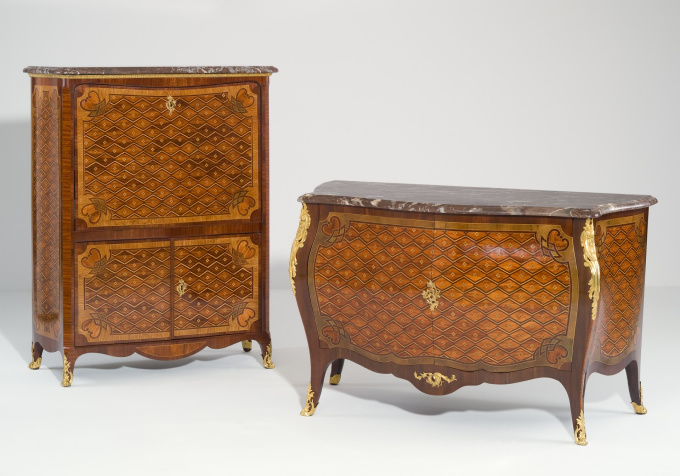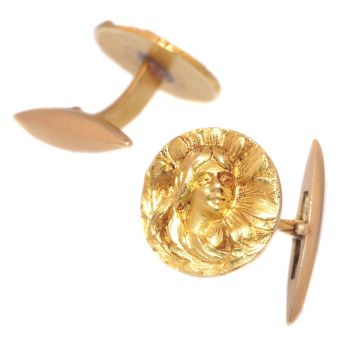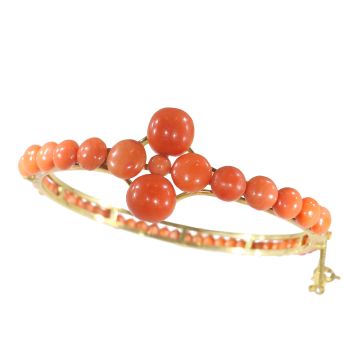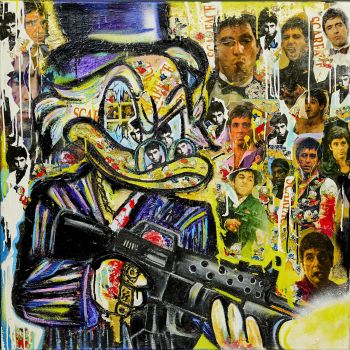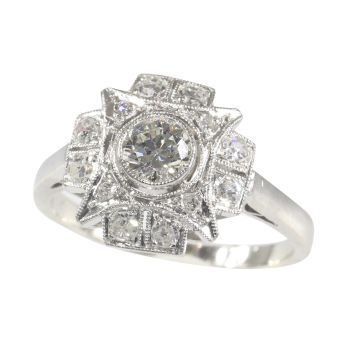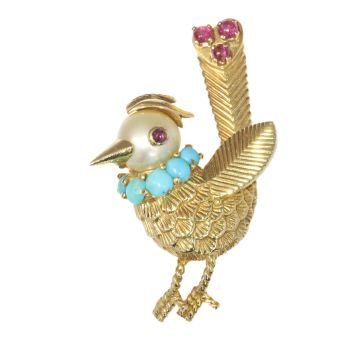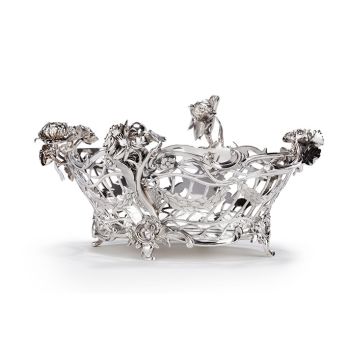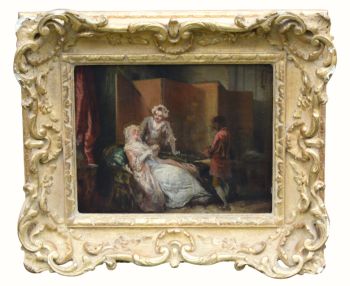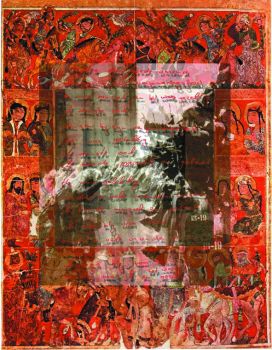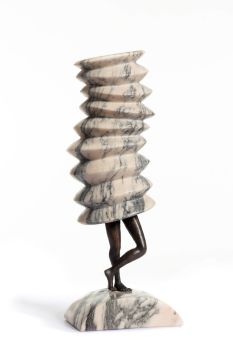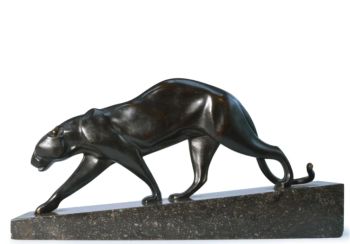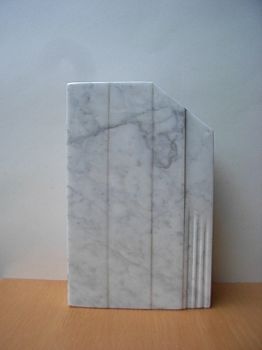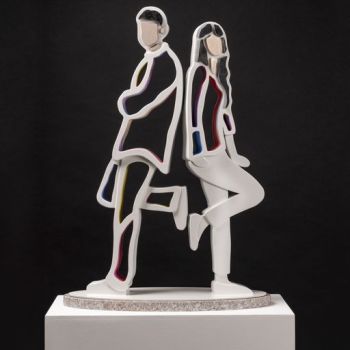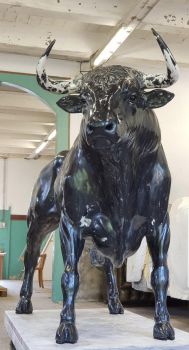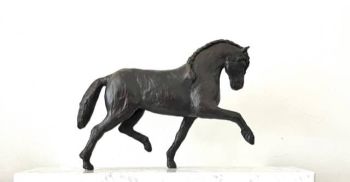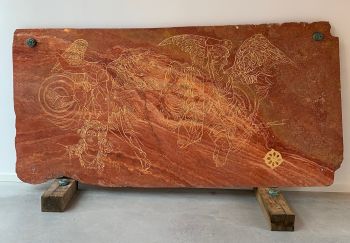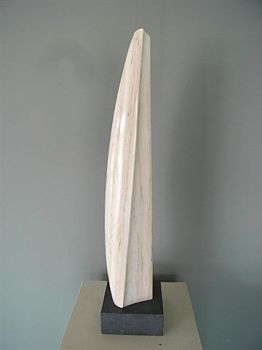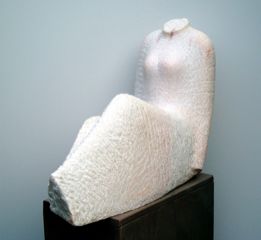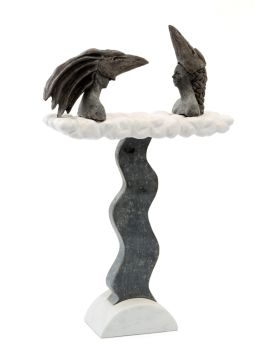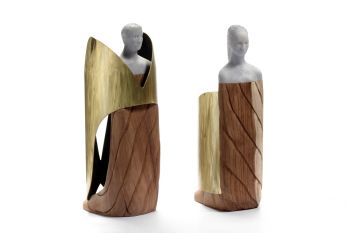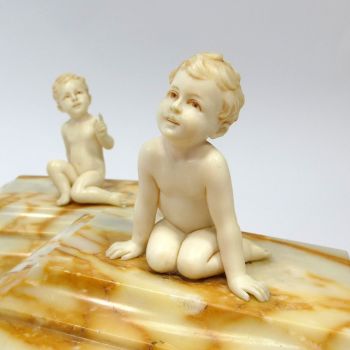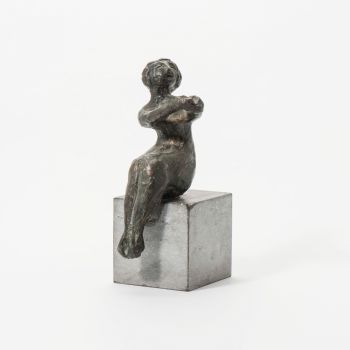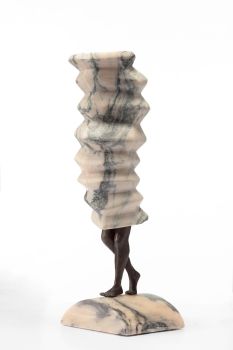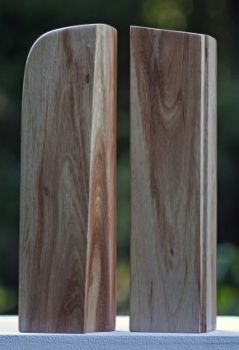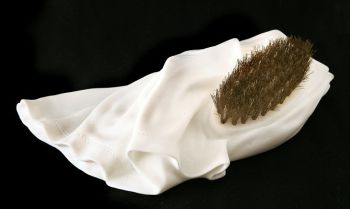A Matched Ensemble of Secrétaire and Commode 1760 - 1770
Unknown artist
MarbleStoneWoodOakRed marble
89 ⨯ 144 ⨯ 66 cm
Currently unavailable via Gallerease
- About the artworkCommode
The commode has an interior with one shelf. The front and side are bulged out. The front is fitted with to doors instead of drawers. The doors are fitted with a bronze ornamented scutcheon in the middle. The curved corners are mounted with gilt bronze mounts that are decorated with acanthus and flowers. The mounting on the skirt and the scutcheon are decorated with asymmetrical rocailles and flowers.
Front and sides of the commode are decorated with a geometrical inlayed zig-zag pattern that is studded with small rosette-motives. The geometrical pattern is framed in a cartouche.
Measurements: heigth 89 cm, width 144 cm, depth 66 cm.
Secrétaire
The lower part of the secrétaire is a cupboard with a shelf that is closed by two doors. The upper part is closed by a leaf that once extended serves as a writing desk. The writing desk is lined with green leather. The interior is veneered with mahogany, boxwood and kingwood. The interior has seven drawers, an open section and a curved shelf. The exterior is decorated on the side and the front with a geometrical inlayed zig-zag pattern that is studded with small rosette-motives. The zigzag pattern is framed in cartouches with ornamented corners.
Ensembles of different types of furniture with a similar decoration were often seen in the 18th century as a means to enhance the unity of an interior. In the Netherlands this practice was copied from the French, who were very strong on the unity and harmony of colours and materials in the interior design.
An identical commode is to be found in the collection of the Markiezenhof in Bergen op Zoom. Undoubtedly these commodes were once eachother’s pendants that might have been seperated when the pieces were auctioned after the owners decease.
Measurements: height 137 cm, width 109 cm, depth 46 cm. - About the artist
It might happen that an artist or maker is unknown.
Some works are not to be determined by whom it is made or it is made by (a group of) craftsmen. Examples are statues from the Ancient Time, furniture, mirroirs, or signatures that are not clear or readible but as well some works are not signed at all.
As well you can find the following description:
•“Attributed to ….” In their opinion probably a work by the artist, at least in part
•“Studio of ….” or “Workshop of” In their opinion a work executed in the studio or workshop of the artist, possibly under his supervision
•“Circle of ….” In their opinion a work of the period of the artist showing his influence, closely associated with the artist but not necessarily his pupil
•“Style of ….” or “Follower of ….” In their opinion a work executed in the artist’s style but not necessarily by a pupil; may be contemporary or nearly contemporary
•“Manner of ….” In their opinion a work in the style of the artist but of a later date
•“After ….” In their opinion a copy (of any date) of a work of the artist
•“Signed…”, “Dated….” or “Inscribed” In their opinion the work has been signed/dated/inscribed by the artist. The addition of a question mark indicates an element of doubt
•"With signature ….”, “With date ….”, “With inscription….” or “Bears signature/date/inscription” in their opinion the signature/ date/ inscription has been added by someone other than the artist
Artwork details
Related artworks
Unknown artist
A silver spoon commemorating Juff’ Margareta van Hoorn1656 - 1694
Price on requestZebregs & Röell - Fine Art - Antiques
1 - 4 / 12Unknown artist
A Surinam-themed Amsterdam long-case clock1746 - 1756
Price on requestZebregs & Röell - Fine Art - Antiques
 Curated by
Curated byGallerease Magazine
1 - 4 / 17 Curated by
Curated byDanny Bree
Unknown artist
A SMALL IVORY NETSUKE OF A DUTCHMAN WITH A DRUM1750 - 1800
Price on requestZebregs & Röell - Fine Art - Antiques
Unknown artist
A RARE COMPLETE INDIAN SADELI INLAID WORK AND WRITING BOX1800 - 1850
Price on requestZebregs & Röell - Fine Art - Antiques
Unknown artist
A rare Japanese export lacquer medical instrument box1650 - 1700
Price on requestZebregs & Röell - Fine Art - Antiques
Unknown artist
Japanese transition-style lacquer coffer 1640 - 1650
Price on requestZebregs & Röell - Fine Art - Antiques
1 - 4 / 24Unknown artist
Set Franse Empire Pendules / Empire Lectura penduleearly 19th
Price on requestKuipers Kunst & Antiek
1 - 4 / 24

